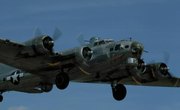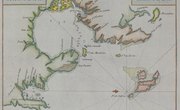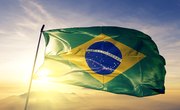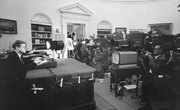From 1910 through the end of World War II, the Korean peninsula was a Japanese colony. Japan lost control of Korea when it surrendered to the Allied Powers -- Great Britain, the Soviet Union and the United States -- in 1945. The victorious nations envisioned an independent post-war Korea. In the end, the peninsula wound up divided into two ideologically distinct countries that have been hostile to each other ever since.
Conference at Yalta
At the Yalta Conference in February 1945, the leaders of the Allied powers -- British Prime Minister Winston Churchill, American President Franklin Delano Roosevelt and Soviet Premier Joseph Stalin -- met to make post-war plans for Europe and Asia. Later, as part of the strategy to end the war in the Pacific, Stalin agreed to declare war on Japan once Nazi Germany surrendered. In order to liberate Korea, the Soviets would then temporarily occupy half of the peninsula north of the 38th parallel, and American forces would do the same in the south.
The Japanese Surrender
In August 1945, Harry Truman, who had taken over as president in April upon Roosevelt's death, authorized the use of an atomic bomb against the Japanese city of Hiroshima. On August 8, two days after the bombing, the Soviet Union declared war on Japan. The following day, the United States dropped an atomic bomb on the city of Nagasaki, and the Soviet Union, per the agreement at the Yalta Conference, invaded northern Korea. Japan surrendered to the Allies on August 15. On September 8, American forces invaded Korea from the south.
Emergence of Two States
The United States and the Soviet Union had collaborated in World War II, but political differences prevented the two countries from agreeing on a single system of governance for all of Korea. In 1948, the United States set up a pro-American, democratic administration in Seoul under the leadership of Syngman Rhee. The Soviet Union responded by installing Kim Il-Sung as the head of a communist regime in Pyongyang. Both governments asserted their legitimacy and refused to acknowledge the other. The differences sowed by the United States and the Soviet Union, combined with conflicting views among Korean citizens, made for a volatile situation.
Another War Begins
By 1949, the United States and the Soviet Union had removed their forces from Korea. In an attempt to reunify the peninsula under communist rule, on June 25, 1950, with Soviet approval, North Korea launched an assault on South Korea. The United Nations Security Council -- without the participation of the Soviet Union, which had withdrawn its delegate to protest the exclusion of communist China from the organization -- formally condemned the attack. In July 1950, a U.N. coalition consisting mostly of American forces entered the conflict on the side of South Korea. By the time an armistice put an end to the fighting in July 1953, some three million Koreans and more than 50,000 Americans had lost their lives, yet the peninsula remained divided. The Korean Demilitarized Zone, a two-mile wide border that, contrary to what its name suggests, is heavily fortified, encompasses the demarcation line that still separates the two countries.
Related Articles
References
- History.com: This Day in History -- American Troops Arrive in Korea to Partition the Country
- History.com: Korean War -- Facts & Summary
- Columbia University: Asia for Educators -- Korea as a Colony of Japan, 1910-1945
- National Geographic Magazine: Korea's DMZ -- Dangerous Divide
- Asia Society: Korean History and Political Geography
- History.com: World War II -- The Bombing of Hiroshima and Nagasaki
Writer Bio
Since beginning her career as a professional journalist in 2007, Nathalie Alonso has covered a myriad of topics, including arts, culture and travel, for newspapers and magazines in New York City. She holds a B.A. in American Studies from Columbia University and lives in Queens with her two cats.











